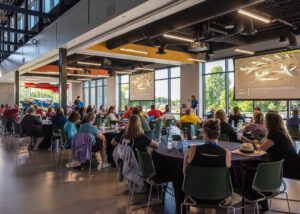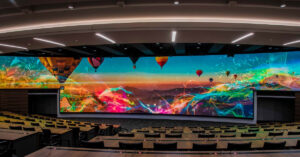
5 Tips for a Better Live Stream
Published June 12, 2020
With everyone live streaming every possible event out there, here are some tips for helping your stream stand out from the crowd.
- Have an audio mix exclusively for the live stream
- Use a variety of camera shots
- Keep your transitions short
- Dedicate someone to respond to online comments
- Do a simulated live event
1. Have an audio mix exclusively for the live stream
When you have a technician mixing in your space, they are listening to how the PA system is interacting with the room and making adjustments to make it sound best in that space. However, live stream audio, instead of coming out of your PA, comes out of the tiny speakers on a mobile device or television.
The ear and audio processing required to treat these two destinations are drastically different. The challenge to accomplishing this requires a second technician, and potentially, more hardware. It really depends on what you’re currently using to mix and distribute your live stream.
2. Use a Variety of Camera Shots
Imagine how you observe a room for the first time. You walk through the door, you see the room as a whole and maybe something draws your eye, so you get closer. Use the same idea with your camera shots.
Start with a shot that shows the whole room, the big picture. This allows viewers to get a sense of space on a broad level. Then, add the detailed shots wherever the action is happening. A tight shot of the speaker, just the torso and head, or a close up of the guitarist strumming.
Imagine if you reversed it. If you start up close and never give them a bigger picture, viewers will think “Where am I?” and that jarring nature can make them click away.
One of my favorite new ways to accomplish this is with a single 4K resolution camera. With live streams maxing out at around 720p, you can get four times digital zoom without loss of quality!
3. Keep Your Transitions Short
When you transition, it’s an opportunity for viewers to leave. If you’re taking too long or don’t do anything to keep their attention, viewers can just move onto the next thing. So, keep your transitions short, just like this tip.
4. Dedicate someone to respond to online comments
By dedicating someone to respond to online comments with a full keyboard where they can type swiftly, you can keep your viewers more engaged. You can answer questions, join in fun banter, and keep the conversation going.
5. Do a simulated live event
By pre-recording your content and broadcasting it as if it were live, you can get greater control over everything by editing and tuning it up after recording it. Not enough light? Record in your atrium, narthex, or somewhere with large windows to utilize natural light. Poor audio quality? Boost and edit the audio in post-production. Are transitions too slow? Cut it out in post-production.
If you aren’t already, you can use Open Broadcaster Software (OBS) to accomplish this by connecting your pre-recorded content as a source.
Get Expert AV Assistance
Latest Blogs
About Arrow AV Group
We are a premiere audiovisual integration firm serving corporate, government, healthcare, house of worship, and education markets with easy-to-use solutions that drive success. Family-owned and operated from Appleton, WI for over 35 years.




